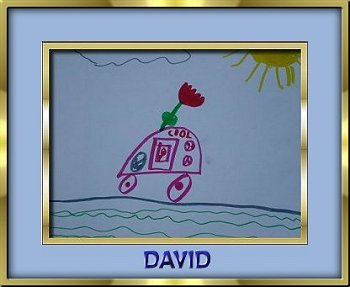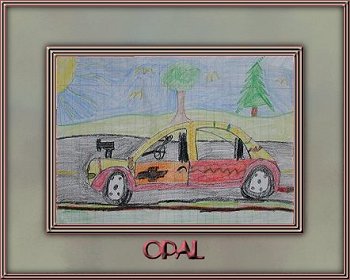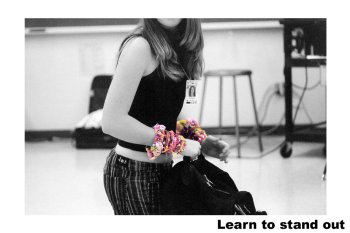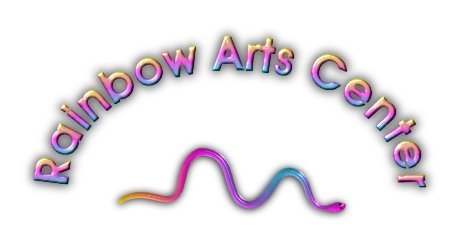Books
and Articles
|
Forming the Pearl:
Creative/Receptive Expressive Therapy:
Process
Applications With Adults Who Have Been Sexually Abused Process
Applications with Adults Who Have Been Sexually Abused Buy
it at Amazon http://www.amazon.com/Forming-Pearl-Creative-Receptive-Expressive/dp/1456544160
[Chapter 4, Follow
the Yellow Brick Road, Enneagrams]
|
|
Excerpt from "Forming the Pearl"
SUMMARY OF CREATIVE
RECEPTIVE EXPRESSIVE THERAPY
The metaphor of the oyster, who
transforms the trauma of a piece of sand or grit inside its shell by
surrounding it with nacre and forming a pearl, describes the healing
process of individuals who have been wounded as they journey towards
enrichment and illumination. Their spiritual journey is one of
transforming the grit to a pearl through moving from a victim/survivor to
a thriver/activist/victor and then to an
adventurer/pilgrim/traveler/explorer.
The Creative Receptive Expressive
Therapy (CRET) process is based on the complimentary aspects of yin/yang
as active and passive imagery, and the middle way as process, with a
transpersonal and soul centered philosophy. Woven throughout the process
are the creative arts along with archetypal themes and imagery, and the
theories of Gurdjieff and the Enneagram. It also utilizes the
mind/body/cellular link as developed by Rossi (1986, 1993) and combined
with Ericksonian hypnotherapy, neuro-linguistic programming (NLP) and the
various sensory or process channels.
Expressive Therapy is an eclectic
blending of more than one creative arts process utilized in therapy and
for personal growth and development, and appears to have its roots in
shamanism. McNiff (1988) sees the shaman as an archetypal figure for what
creative arts therapists do in therapy where the focus is on experience
rather than concept and is balanced with nature. The shaman is a
"prototypical healing figure...and has always been a multi
disciplinary practitioner--a holistic healer. A shaman never specializes
in only music, or art, or dance, or drama. Instead he or she naturally
integrates all of these elements into practice" (Moreno, 1988, p.
273).
Creative arts includes, but is not
limited to the utilization of myths, metaphors, stories, and folklore; the
making of art by painting, drawing, sculpting; drama and rituals; music,
both passive listening and active doing (through body participation, i.e.
playing a musical instrument, singing, clapping hands); movement/dance
(from Ti Chi to sacred kalana hula); journaling, writing stories, prose
and poetry; and the ability to use natural hypnotic trance states in the
creative therapy process.
Rather than interpreting the process
or product, the therapeutic model of CRET is one of exploration,
interaction, appreciation and acceptance of both process and product to
achieve transformation. Discernment or keen insight and contemplation, are
utilized instead of interpretation, which implies judgment of the product
or process. It is a harmonious reflection and inter-relationship of the
creative process (content) and receptive product (form) through
exploration, interaction, appreciation, and acceptance of the
dance/movement/song/
poem/painting/scribble that engages our head, heart and gut in an
imaginal healing process of great depth. It means making the invisible
visible, bringing out the hidden wisdom and treasures within. The oyster
explores and interacts with the sand (blocks), appreciating and accepting
the nacre (process) and the formation of the pearl (wisdom).
The process of Creative Receptive
Expressive Therapy "utilizes the creative arts with
creative/receptive imagery to provide a means of centering and finding the
inner/observer self. Breath work and music are used to guide participants
to a state of relaxation to produce peace-full-ness and balance. The
imagery is then used to promote intimacy with the inner observer self by
exploring inner symbology and expressing it externally through creative
arts rituals. The image manifests on the physical plane through making
art, bodywork and movement, poetry, making music, telling stories, etc. In
this way, inner being/attention can be linked to outer doing/attention to
heal vulnerabilities and facilitate the creative flow"
(Livingston-Dunn, 1995, p. 26).
Healing may be facilitated at the
mind/body/cellular level by Expressive Therapy where integration of more
than one creative arts modality is utilized in therapy. In addition, the
creative receptive model of Expressive Therapy utilizes both active and
passive styles of imagery which act as a bridge or link between primary
process and secondary process thinking so that the imagery may be dealt
with in its raw form and transformed to positive ways of handling life's
problems. Imagery is used in the broad sense of including the process
channels of visual, auditory, proprioceptive, kinesthetic and cognitive.
When imagery is combined with the creative arts, such as bodywork, music
and art making, different process channels are activated to integrate both
the right and left brain and the body/mind, which may take place at a
cellular level in a softer, more beneficial way.
The creative arts are a form of
ritual activity and celebrate creativity and the enrichment of human
potential. The arts compliment and interact with each other to unify play
and imagination through all the sensory process channels. Music primarily
utilizes the auditory channel, while the emphasis in dance is on the
kinesthetic or sensory motor channel. Theater uses auditory, kinesthetic
and visual; poetry uses auditory and visual. Although it is apparent that
the visual arts uses the visual process channel, the kinesthetic process
channel is equally important not only in the process of making the art,
but in the movement of the colors and forms on canvas, for example. This
is also true of the other creative arts.
The three centers (gut, heart, head)
and personality types of the Enneagram are utilized as an archetypal guide
to blend the three paths of the journey, that is, the path of action
(gut), path of love (heart), and the path of wisdom (head) into the fourth
way of Gurdjieff where all three paths are combined, for creative
transformation (Ouspensky, 1949,1957). These three paths or centers, also
contain process channels that are combined through the creative arts to
promote intimacy with one's true essence through compassion, love and
wisdom.
Expressive Therapy
encompasses "pathology" by working with removing blocks for
wholeness and harmony. The way is through the
wound/shadow/addiction/poison/sand where this poison/sand/block becomes
the medicine/nacre/process that forms the pearl/elixir/soma/nectar. It is
utilized:
To access, process and integrate traumatic
memories
For expressing
emotions and catharsis
To release stress and
tension
To integrate split off
parts of self
As a prelude or
rehearsal for future actions
To increase self esteem and develop a healthier
self concept
To foster empowerment, containment, exploration,
and expression
To facilitate clarity
of mind
To develop or unblock
creativity and imagination
To seed hope and utilize inner resources
For integration of mind/body/cell
As a path to meditation
As a connection to spirituality.
Activation of hidden creative
resources forms a connection with the transcendent source of power and
sustenance for the extraordinary action of static activity (receptive
creativity) and dynamic passivity (creative receptivity). Following the
process or path of gentle beauty to the next challenge and grave danger is
realized through a deep trust in one's inner observer self.
The process of art has been connected
to meditation (Cox, 1992) and to altered states of awareness (Lachman-Chapin,
1985). Meditation facilitates an expanded awareness and increases feelings
of clarity and peace of mind, while it decreases body mind stress (Dychtwald,
1977). Perhaps the ultimate goal of enrichment in therapy is to
teach/learn meditation and how to change levels of consciousness so that
one can enter any state at will, find information and rechannel it (Joy,
1979).
|
|
Enjoy the art of my
Grandchildren
and a short poem |
|

|

|
|

Sammi's Photo |
Jessica's art work??? |
|
|
|
Dear John
If we see the world
Through ugly eyes,
The world will be
Ugly.
If we see the world
Through beautiful eyes
The world will be
Beautiful.
The only choice we have
Is how we see the world.
Only we can choose.
Choose wisely.
Love,
Constance
(1995)
|
|
